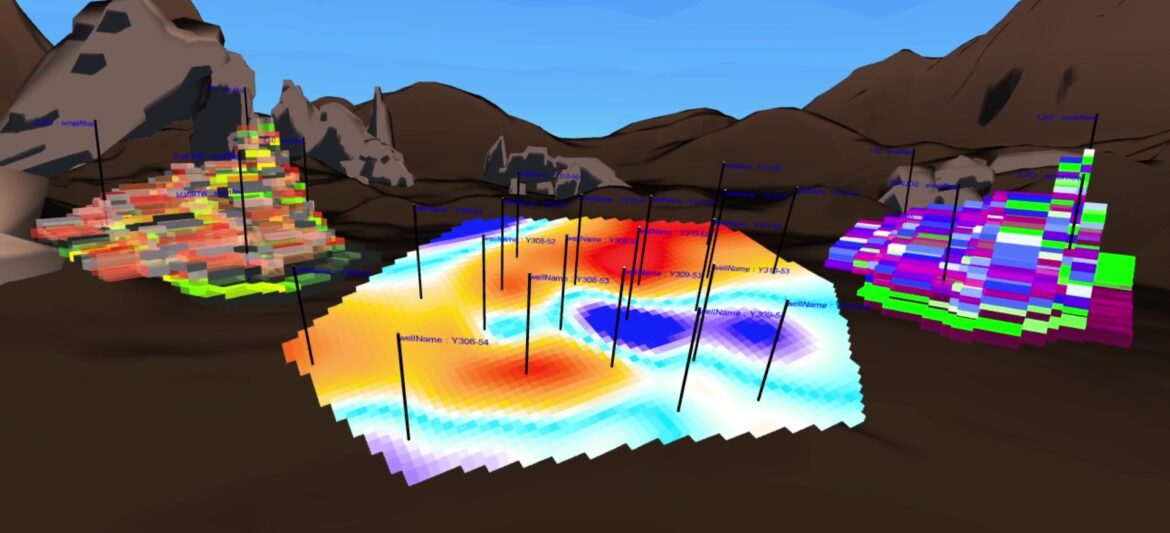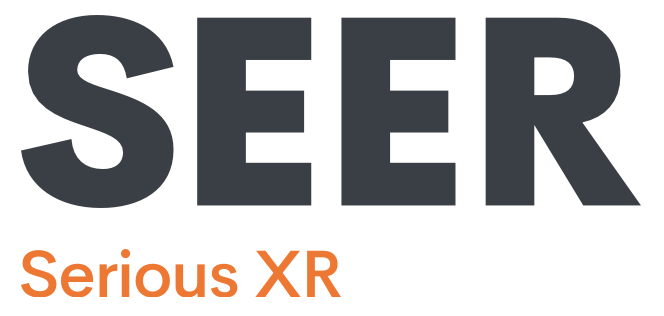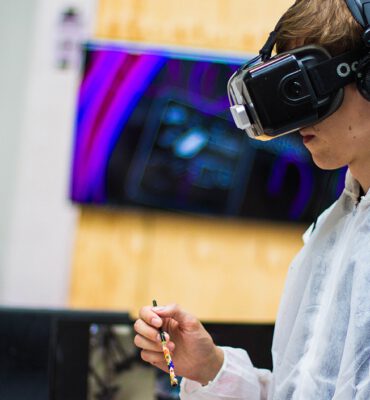
Extended Reality Innovations for Reservoir Engineering
In a joint effort with the Computer Modelling Group Ltd. and the Reservoir Simulation Research Group, we are researching how extended reality technologies can be used to innovate upon the reservoir engineering process. Specifically, our team aims to determine evidence-based guidelines for 3D user interfaces that enable the effective application of extended reality (XR) technology, such as virtual reality (VR) and augmented reality (AR), to aid in the visual analysis of scientific data. To demonstrate the value of these guidelines, we are using real-world reservoir engineering scenarios and data. To effectively determine how XR technologies may be utilized to create efficiencies in such reservoir engineering workflows, we are utilizing our team’s combined expertise in petroleum engineering, human-computer interaction (HCI), immersive analytics, and interactive visual technologies to ensure XR can deliver on its potential for industry applications while providing a high-quality user experience. Achievement of these goals will advance several important fields including HCI, XR application development, scientific visualization, artificial intelligence, and engineering. These advances will in turn provide valuable fundamental research that will help drive innovation in the Canadian and global oil and gas industry.
Currently still in development, the project centers around the following three main objectives:
Objective 1: 3D Interaction and User Experience Design
A variety of interactions are required to understand and work with reservoir models. These include slicing, filtering, rotating, scaling, changing properties, and animations over time to name a few. In addition to adapting such standard model interactions to an XR environment, new unconventional interactions are planned to be developed as well to explore how the unique elements of XR can be used to benefit the reservoir engineering process in ways simply not possible with traditional methods. All of these interactions must be easy and intuitive to learn and use, and will be designed to match the unique needs to reservoir engineers and data analysts. The design, usability, and user experience of these interactions will then be assessed and measured, to study in which ways the immersive interactions are effective and provide more value for reservoir engineers when compared to traditional approaches.
Objective 2: Enhancement of Reservoir Engineering Workflows through Immersive Data Visualization
To facilitate and enhance reservoir engineering workflows, strategies utilizing XR immersive analytics techniques will be applied to visualize and interact with the geometry and property data of reservoir models. This includes reservoir simulation ensembles, uncertainty representations, time series graphs, well production, results of various kinds of data analyses, or the output of artificial intelligence algorithms. The combination of conventional and novel methods of model interaction will be incorporated in such a way to provide an improved analysis experience that is natural and highly visual, yet focused. For instance, by taking advantage of the greatly increased working space available in immersive XR applications, we intend for multiple visualizations of different datasets to be simultaneously seen in detail as they surround the user in 3D space to help facilitate a greater understanding of behaviors and complex relationships between datasets. By leveraging and improving upon the latest techniques in data visualization and immersive analytics, we will provide interactive tools that can be used to rapidly diagnose unexpected results and improve the quality of scenarios, providing greater engineering benefits as a result. These designs will be verified for their usability and efficiency through user studies, testing, and feedback.
Objective 3: Support for Collaboration
The ability to have a team of experts working together over a reservoir scenario is of critical importance to improve the time to completion of many workflows and reduce errors, which in turn saves valuable time and money. Since immersive technologies allow more than one user to be in the same virtual space, seeing the same model together, with different views, it is perfect to support such multi-person collaboration in a way simply not possible with conventional screen-based methods. For this reason, various ways of collaborating will be implemented in XR such as a presentation mode with one presenter and multiple viewers, and an interactive mode where each participant can manipulate and interact with various visualizations independently to facilitate collaborative data analysis. Different views of the data will be considered, providing individually customized views or interactions based on utility or user role, and the impact of this kind of collaboration will be studied. Analysis of engineering workflows will be performed with multiple users to see what adjustments to the use of information space and additional techniques will provide benefits. Additionally, mixed-reality collaboration with viewers on non-immersive devices or different combinations of VR and AR devices may be also considered.
Having started in February 2021, the project is still in its early stages, however below is a video of the project’s progress as of April 2021.
Project Team:
Agile Surface Engineering Lab Members
Dr. Frank Maurer
Bryson Lawton
Eric Wang
Amir Aminbeidokht
Parisa Daeijavad
Farzana Aktar
Seher Dawar (until April 2022)
Reservoir Simulation Research Group Members
Dr. Zhangxing (John) Chen
Steve Samoil
Die (Amy) Hu
Siqi (Sheldon) Xie
Kyson Su
Rachel Dalton
Stephen Cartwright (until Dec 2021)
Computer Modeling Group Ltd. Members
Dr. Long Nghiem
Rob Ursem
Adrian Thomas
Sunbir Brar (until July 2021)




